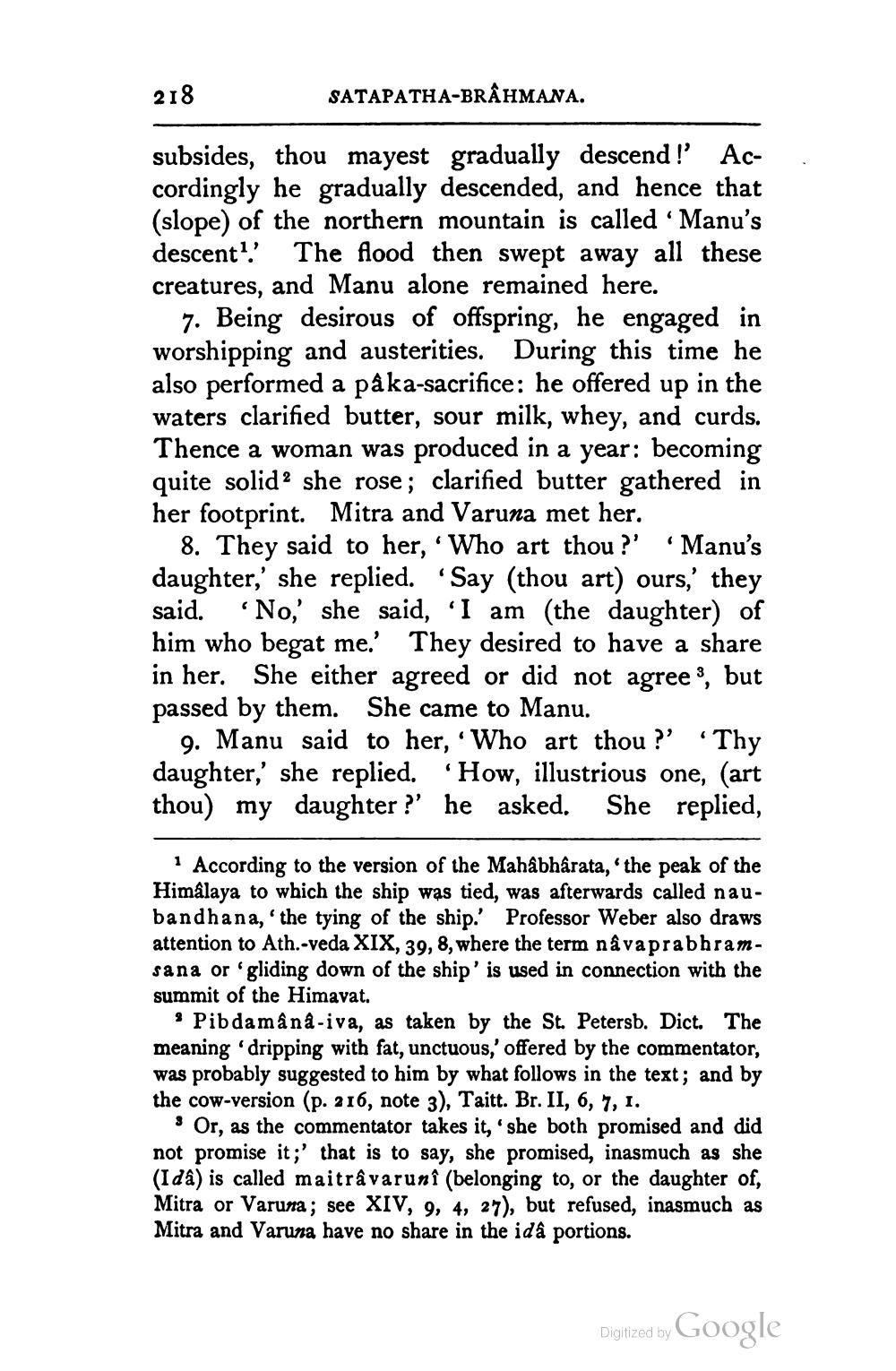________________
218
SATAPATHA-BRÂHMANA.
subsides, thou mayest gradually descend!' Accordingly he gradually descended, and hence that (slope) of the northern mountain is called 'Manu's descent". The flood then swept away all these creatures, and Manu alone remained here.
7. Being desirous of offspring, he engaged in worshipping and austerities. During this time he also performed a paka-sacrifice: he offered up in the waters clarified butter, sour milk, whey, and curds. Thence a woman was produced in a year: becoming quite solid she rose; clarified butter gathered in her footprint. Mitra and Varuna met her.
8. They said to her, “Who art thou ?' 'Manu's daughter,' she replied. 'Say (thou art) ours,' they said. "No,' she said, 'I am (the daughter) of him who begat me.' They desired to have a share in her. She either agreed or did not agrees, but passed by them. She came to Manu.
9. Manu said to her, “Who art thou ?' 'Thy daughter,' she replied. 'How, illustrious one, (art thou) my daughter ?' he asked. She replied,
1 According to the version of the Mahâbhârata,' the peak of the Himalaya to which the ship was tied, was afterwards called naubandhana, the tying of the ship.' Professor Weber also draws attention to Ath.-veda XIX, 39, 8, where the term navaprabhramsana or 'gliding down of the ship' is used in connection with the summit of the Himavat.
9 Pib damâna-iva, as taken by the St. Petersb. Dict. The meaning dripping with fat, unctuous,' offered by the commentator, was probably suggested to him by what follows in the text; and by the cow-version (p. 216, note 3), Taitt. Br. II, 6, 7, 1.
: Or, as the commentator takes it,' she both promised and did not promise it;' that is to say, she promised, inasmuch as she (I da) is called maitrâvaruni (belonging to, or the daughter of, Mitra or Varuna; see XIV, 9, 4, 27), but refused, inasmuch as Mitra and Varuna have no share in the ida portions.
Digitized by Google




